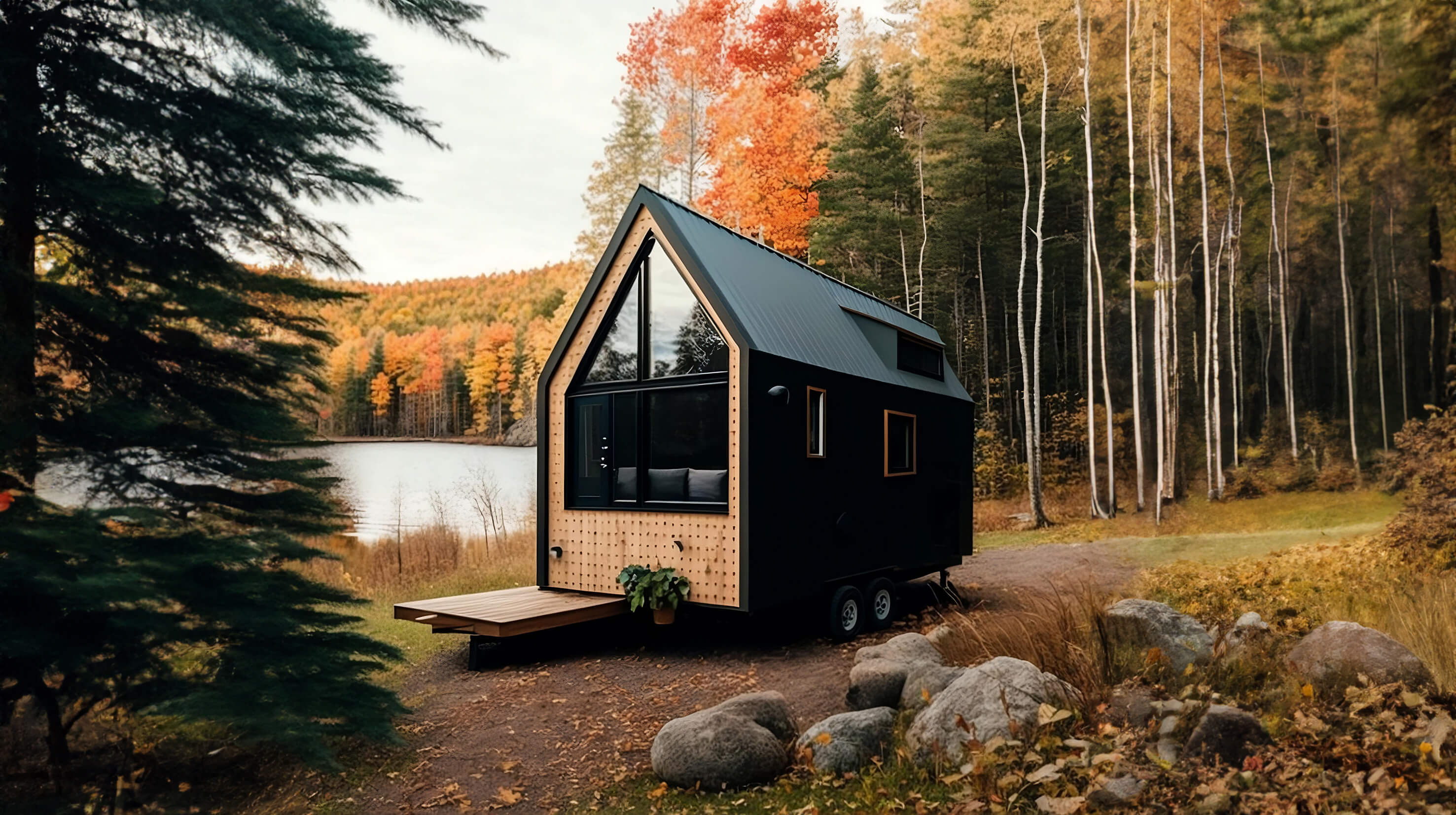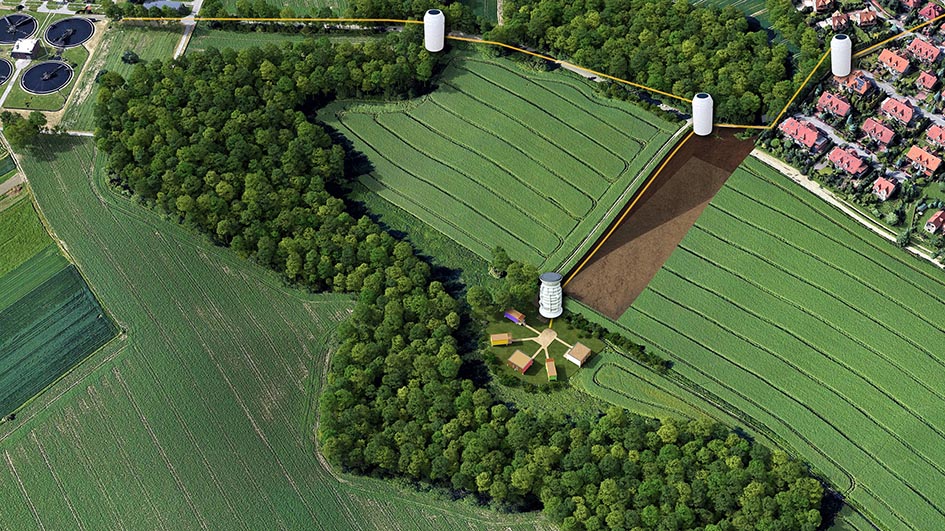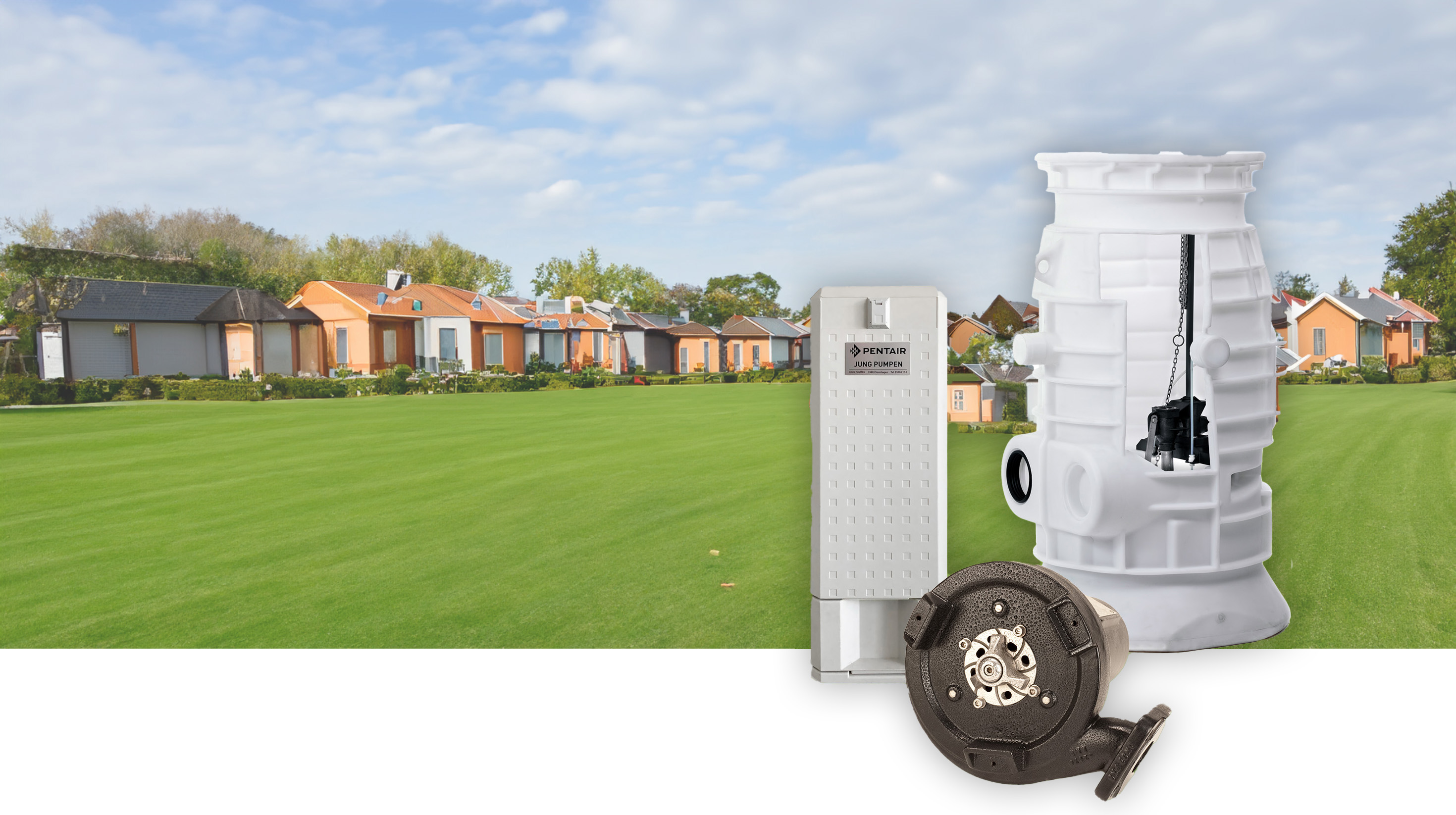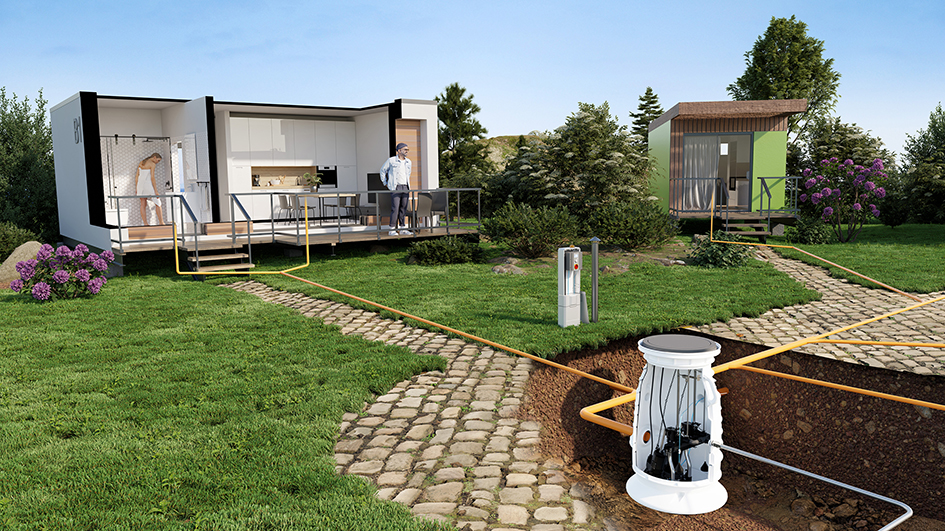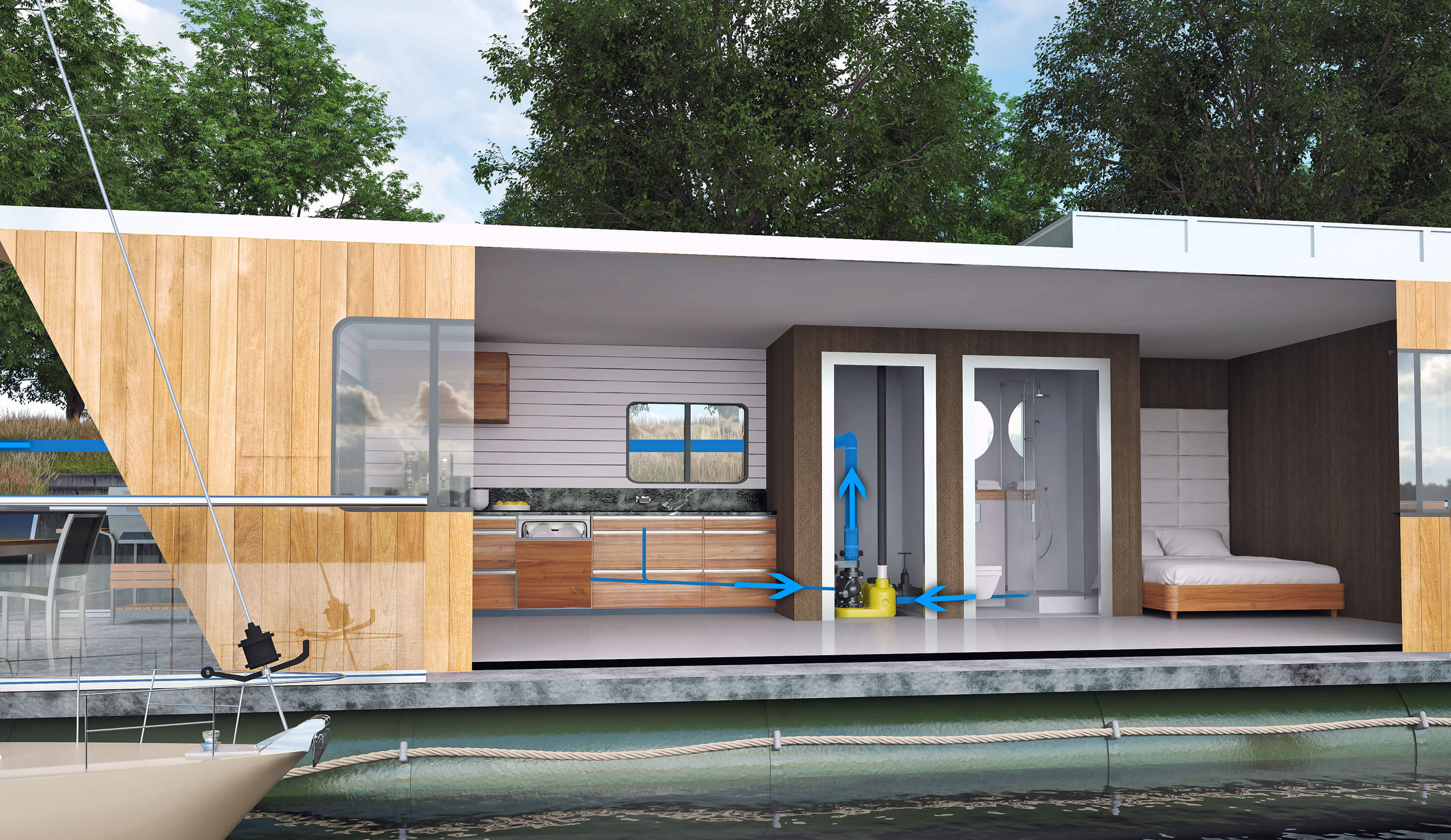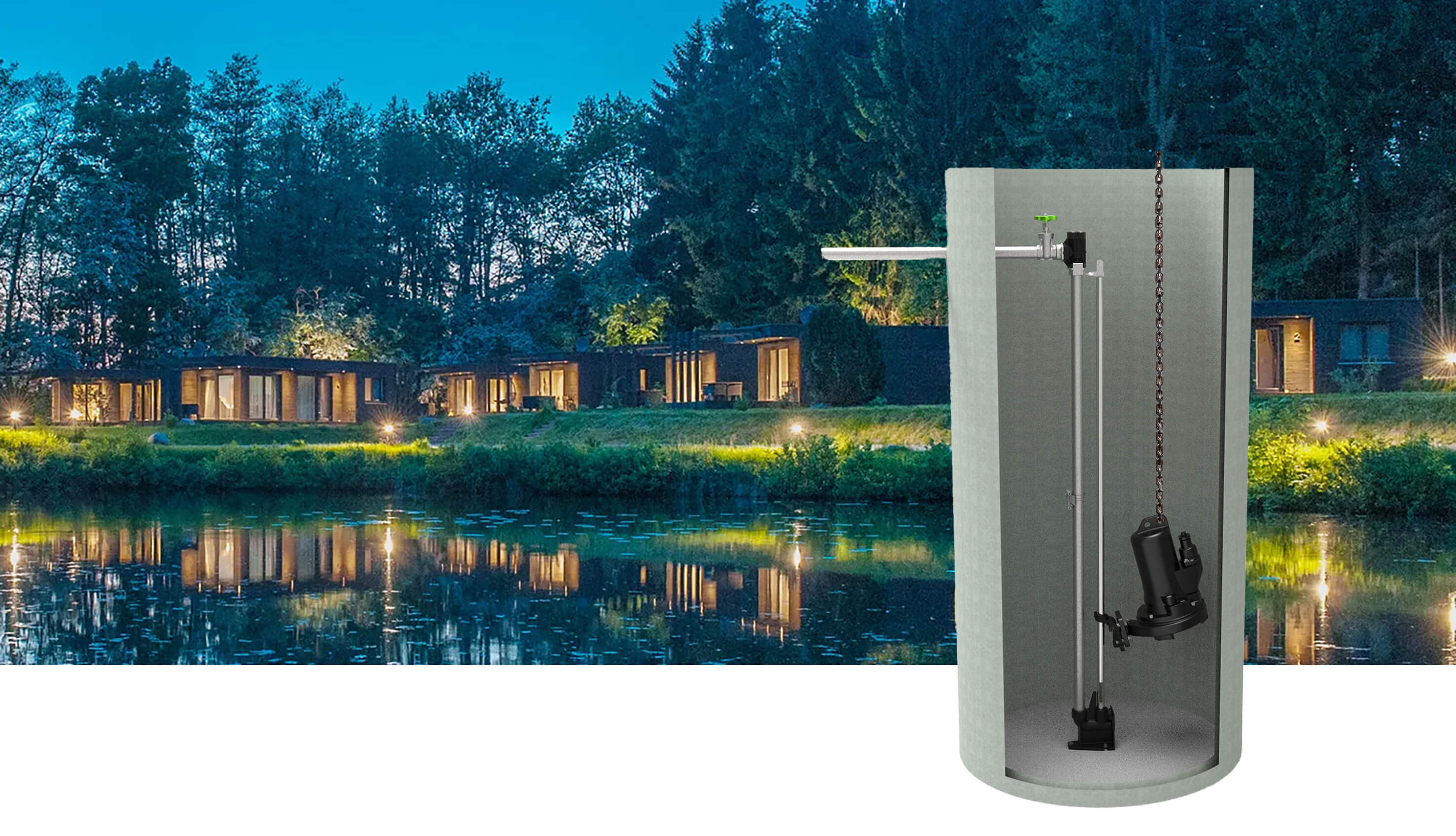Tiny houses are more than just a trend - they are a movement. They represent a shift in thinking, away from overconsumption and towards a more sustainable, conscious lifestyle. But as with any innovation, they also present new challenges. Building permits for this form of housing often fail because of the chosen wastewater disposal system, which is often not accepted by authorities. In the following, options for the drainage of Tiny Houses are presented and special attention is paid to the standard-compliant wastewater disposal with pressure drainage systems.
What is a Tiny House?
Tiny Houses are small, often mobile dwellings designed for efficiency and minimalism. They offer a low-cost and flexible housing solution that is becoming increasingly popular, especially among younger generations and environmentally conscious people. On average, they have 35 sqm of living space and are used both as a permanent residence and as a holiday home (Figure 1).
Market significance and target group
The market for Tiny Houses is growing steadily, driven by the increasing demand for affordable housing and the desire for a simpler, more sustainable lifestyle. The target group is broad and ranges from young professionals to retirees to environmentally conscious people who want to reduce their ecological footprint.
Challenges with planning permission
One of the biggest challenges in building Tiny Houses is obtaining a building permission. In many municipalities there is a "connection requirement" to the public sewage system, which can be problematic for Tiny Houses, which are often built on smaller, rural plots.
Conventional drainage options
There are various ways to drain a Tiny House. Here we will only briefly outline the common drainage options.
The collection pit is a simple and structurally inexpensive solution for the wastewater disposal of Tiny Houses. A leak-proof container made of concrete or plastic is set into the ground and connected to the wastewater disposal system of the Tiny House. However, these pits are often no longer permitted and property owners are required to use more environmentally friendly solutions.
A separation toilet collects urine and faeces separately in containers. The urine is collected separately, while the faeces are either composted or disposed of elsewhere. There are also variants where the faeces are frozen or incinerated. This type of disposal helps reduce odours and the amount of waste to be composted.
A plant-based purification system is a type of wastewater system that uses plants and microorganisms to purify wastewater. The wastewater is passed through a system of gravel and sand filters in which plants grow. The plants absorb nutrients from the wastewater and help break down pollutants. The treated water can then be discharged into the environment or used for irrigation.
A chemical toilet uses chemicals to decompose solids in a tank and reduce odours. The tank must be emptied and cleaned regularly. It is important to use the right chemicals and dispose of them safely to avoid environmental damage.
Connecting Tiny Houses to the public sewage system and then treating the wastewater in a sewage treatment plant is the optimal form of drainage and also has the best chance of obtaining official approval. However, if the Tiny House is located far away from a sewer system or is possibly topographically below the level of the sewer, it is practically impossible to dispose of the wastewater in a gravity system. Smart solutions are needed here to nevertheless implement the desired connection to the public infrastructure.
Pressure drainage and lifting stations
An efficient and sustainable solution for wastewater disposal in Tiny Houses are pressure drainage systems and lifting stations. With pressure drainage, the wastewater is pumped through a small, pressure-resistant pipe. This is particularly advantageous in areas with unfavourable topography or high levels of groundwater, where conventional gravity drainage is not possible. (Fig. 2)
In pressure drainage, small house pumping stations convey the wastewater of individual houses or groups of houses into a pressure pipe network. The wastewater to be disposed of is first collected in a compact polyethylene pumping station outdoors and then transferred to a public gravity sewer or another pumping station by a wastewater pump equipped with a cutting system. (Fig. 3 and 4)
The advantages of pressure drainage, apart from overcoming long distances and slopes, are the cost savings compared to gravity sewer systems. Fewer intermediate pumping stations are required, which in the case of conventional wastewater transport via gravity, repeatedly "lift" the wastewater so that it can flow a certain distance in gravity. This saves construction and operating costs.
As a closed system, pressure pipes do not cause any odour nuisance. They can cross obstacles (e.g. supply lines) and require a smaller laying depth than a gravity sewer. They are often mechanically ploughed about 1 m into the frost-free soil area. Citizens are spared excavation with heavy equipment and weeks of construction sites, as would be necessary when laying large-dimension sewer pipes.
With this technology, Tiny House settlements can be easily connected to the existing infrastructure. Depending on the building density, a house or an entire settlement can be connected to a pressure drainage system. In terms of dimensioning, only the size of the sump, the pump capacity and the dimension of the pressure pipe change.
Proven technology meets new trends - Tiny Houses and Houseboats
Over the past 50 years, Jung Pumpen has successfully drained tens of thousands of buildings using the pressure drainage principle. On the German Baltic Sea peninsula Darß, more than 1,600 holiday homes and buildings are effectively drained using 92 kilometres of pressure pipes. In addition, for decades the company has contributed to the wastewater disposal of Berlin's green belt, which includes many sprawling residential areas, with over 2,000 pressure drainage systems.
Jung Pumpen is also active in the field of wastewater disposal for houseboats with its Compli lifting stations and has already realised numerous projects in the Netherlands and Germany. As it is not possible to install a pressure drainage sump here, the wastewater is collected inside the houseboat in robust PE tanks and transferred to a transfer station located on the shore by a powerful vortex pump when a predefined fill level is reached. (Fig. 5)
If desired, these pumps can also be equipped with a cutting system, which results in thinner pressure pipes, but also in more noise during discharge. However, since the pumps are only in operation for a few seconds per day, this could be tolerated.
Current reference
A current reference in the field of Tiny Houses is the Groneberger Mühle holiday resort, a holiday destination on the German Baltic Sea. The complex consists of 21 modernly furnished Tiny Houses for 2-4 people. Each house has its own terrace, some with a lake view, and is fully equipped, including a kitchen.
A plastic sewer sump PKS-D 1500 with two Jung pumps MultiFree type 35/2BW1 receives the resort's wastewater and pumps it to a transfer sump 250 m away, which is connected to the public sewer system. A Breeze SH1 compressor station ensures that the pressure pipe is regularly flushed with fresh air so that the wastewater is transferred "fresh". The use of pressure pipe flushing systems helps to ensure that the wastewater finds aerobic conditions in the pressure pipes during long retention times, which are common in holiday settlements. (Figure 6)
Conclusion
Innovative and sustainable solutions are needed to manage wastewater disposal in Tiny Houses. Systems such as Jung Pumpen's pressure drainage and lifting units can help and make an important contribution to promoting sustainable housing solutions.


